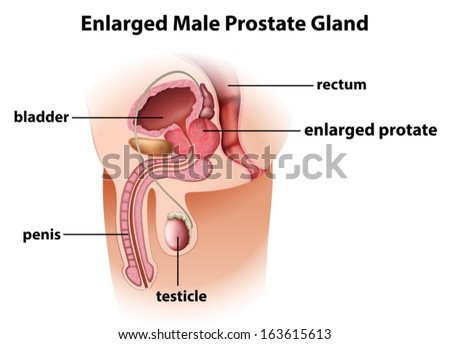Biologically, every human male has a prostate gland. Prostate
is part of male sex organ and reproductive gland. It looks like a walnut. It is
located below the bladder and it surrounds the tube called the urethra. Urethra
is a tube which carries out urine from the body. It also conveys semen during
sexual climax or ejaculation. Semen is the combination of sperm plus the fluid
that the prostate adds to the mix.
We know that the prostate contains 30% muscular tissue and
70% glandular tissue. Like most of the organs in the body, the prostate
continues to grow and develop after birth and as the male specie matures. When a
male has reached physical maturity, the prostate stops growing and could start
growing again as he grows older and older. As the prostate grows, it competes
with the urethra for space. That way, it presses on the urethra to cause
urinary and bladder problems in the process.
Above is An Enlarged Prostate for more illustrations.
In medical terms, an enlarged prostate is often called
Benign Prostatic Hyperplasia or Benign Prostatic Hypertrophy. It may not be
cancerous at this stage but may at a later stage if urgent action is not taken
to manage the enlargement. A poorly managed enlarged prostate can increase the
risk of prostate cancer in any man. Many men do suffer from prostate enlargement
and failure to take fast action to combat it may lead to serious health
challenges down the road. Such men can experience discomfort and pains during
urination, reduced sex capabilities and many other discomforts. Because of
these, the size of a man’s prostate can have a major impact on the quality of his
health and life. In modern living, an enlarged prostate in men is one of the
most pressing health concerns in their overall health and wellbeing.
There is very good news though. An
enlarged prostate is not a death sentence. If not cancerous, it can be managed
with drugs or removed by surgery. Healthy
eating and way of life play a major role in preventing prostate enlargement. As
any good Doctor will tell you, it is always better to prevent than to cure.
That is the lesson here.

